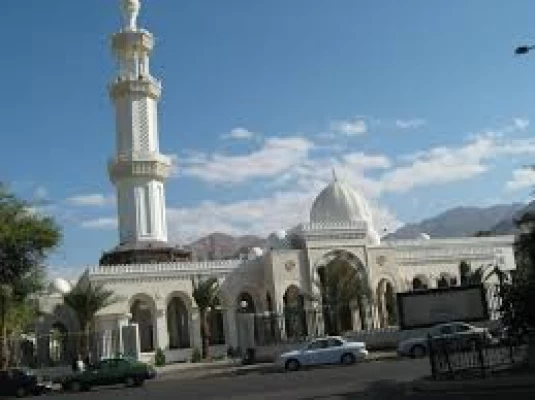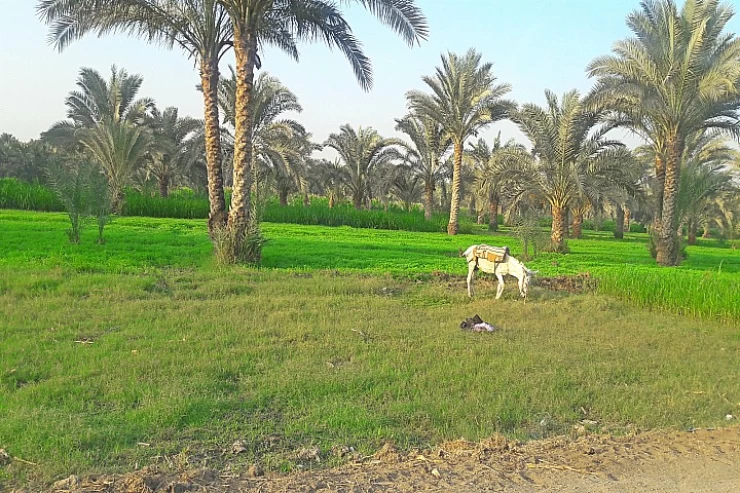
Al-Sharif Al-Hussein Bin Ali Mosque
Al-Sharif Al-Hussein Bin Ali Mosque
The Sharif Hussein bin Ali Mosque in Aqaba was built in 1979, under the reign of the late His Majesty King Hussein bin Talal, as a memorial to the leader of the Great Arab Revolt, Sharif Hussein bin Ali. On October 7, 2011, His Majesty King Abdullah II opened the expansion and rehabilitation of the mosque, an architectural edifice that showcases the decorative arts of Arab and Islamic architecture.
The design of the mosque, which has a total area of 3,100 square meters, took into account the aspects of Islamic architecture in the building in terms of interior and exterior design work that appears in the arches, doors, domes and the 40-meter-high minaret on one of its corners.
The original design of the mosque follows the traditional standards for the design of Islamic mosques in hot regions, with an open-air porticoed building and a rectangular prayer space to maximize the extension of the first row of prayers.
The mosque's exterior treatments contain traditional and contemporary architectural and decorative elements, which have their origins in the Arab-Islamic architecture of the Levant, especially the Mamluk architecture, which was famous for its beauty and grace and its use of three-dimensional decorations stemming from the meeting of the architectural blocks, which are revealed when the sun falls on these surfaces and the decoration emerges through the shadows that are drawn on them and change with the change of time during the day.
This mosque's dome is the first and biggest in the Kingdom to be embellished in three dimensions. The decorations that adorn its external surfaces were executed with fiber-reinforced white concrete panels as a modern technical alternative to stone carving, and the facades of the mosque are decorated with many Holy Qur'anic verses in the Thuluth script and circular brackets framing the word Al-Jalalah in Moroccan Kufic script.
The dome and minaret are the two most beautiful and prominent elements of the mosque, decorated with beautiful sculptural decorations, Koranic verses, rows of muqarnas, conical columns, frames and cornices that make them architectural masterpieces that invite contemplation and admiration.
The mosque's interior treatments include many applications of traditional Islamic architectural handicrafts and motifs using a range of traditionally used materials, highlighted by wooden windows, lunettes, and colored glass ornaments.
The interior of the central dome is decorated to mimic the dome of the sky and the rays of light, and is adorned with eight of God's beautiful names and verses from the Holy Qur'an written in thuluth script.
The mosque utilized natural sunlight during the day through its windows, and at night the interiors were furnished with elaborate fixtures suspended from gilded metallic frames resembling that of the chandeliers used in the Prophet’s Mosque in Medina, which were in the shape of decorative lanterns. The mosque is surrounded by 5,500 square meters of courtyards, gardens and walkways, decorated with perennial Sidr trees, palm trees and others.
The mosque is an Islamic cultural center with spaces for teaching the Qur'an and Islamic sciences to men and women. The mosque is an urban facility and a lung to breathe the city with its coordinated spaces such as green gardens, shaded seating areas and prayer, gathering and picnic areas, in line with its vital location in the city center overlooking King Hussein Bin Talal Street (the Corniche).















